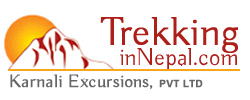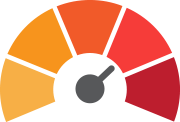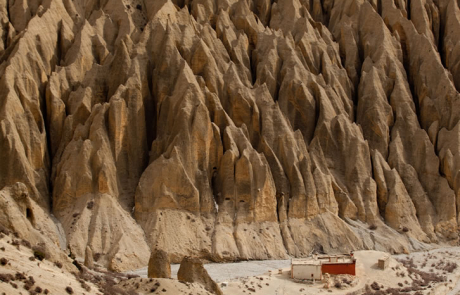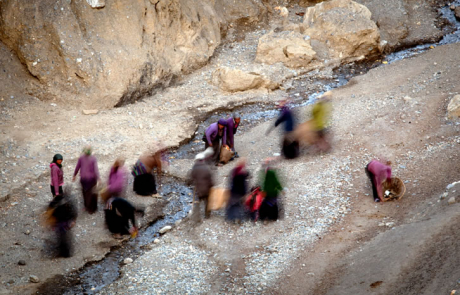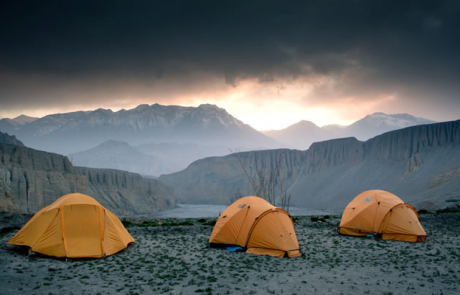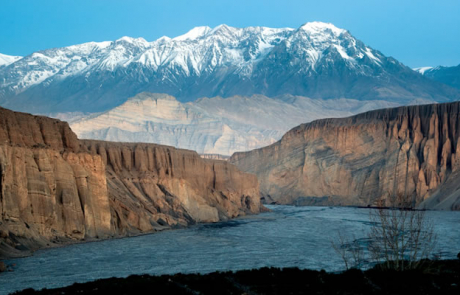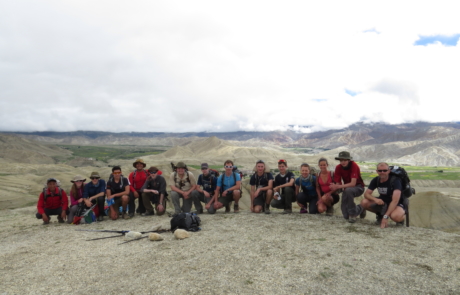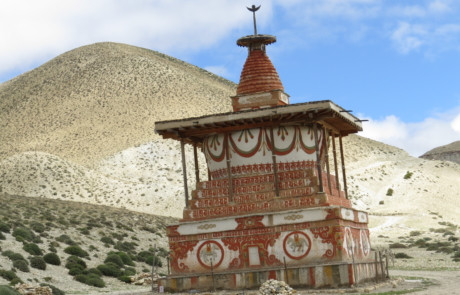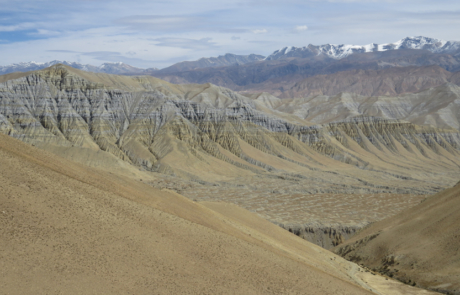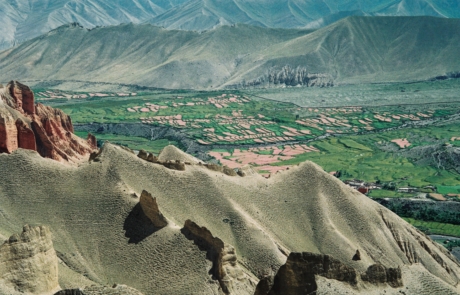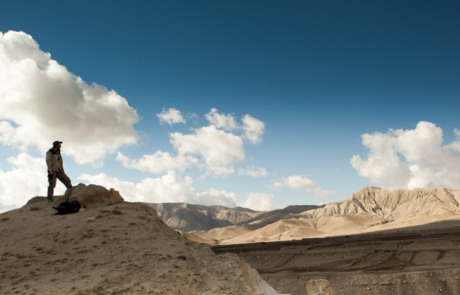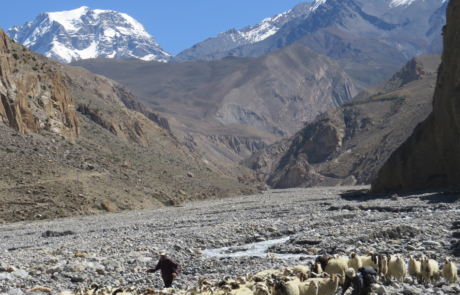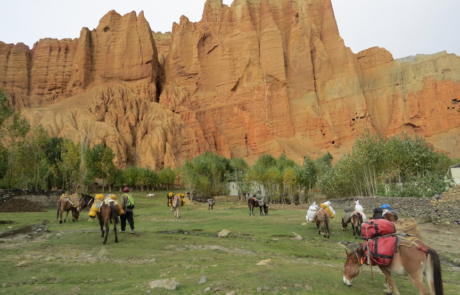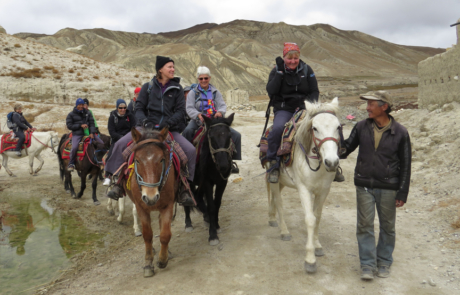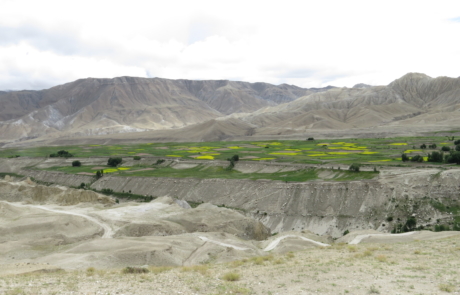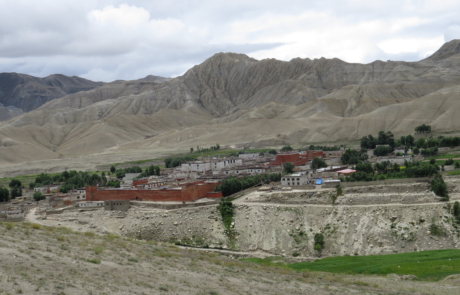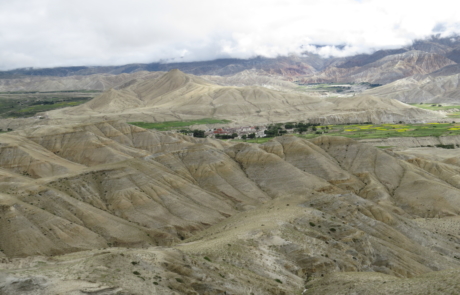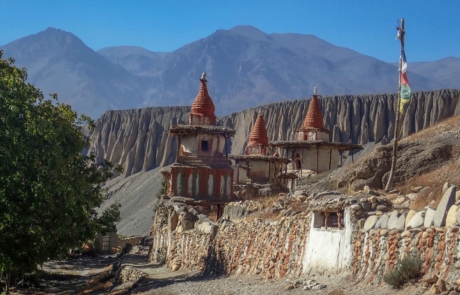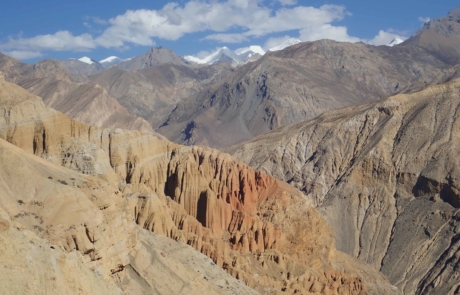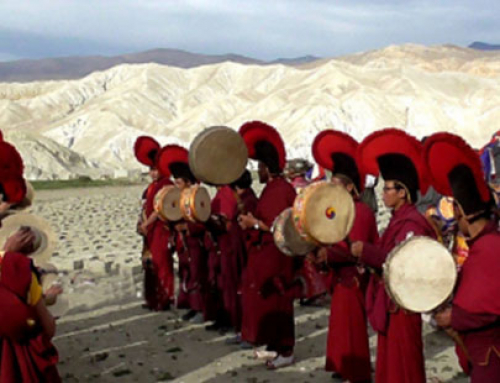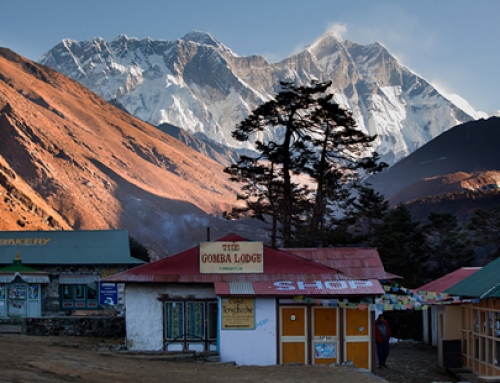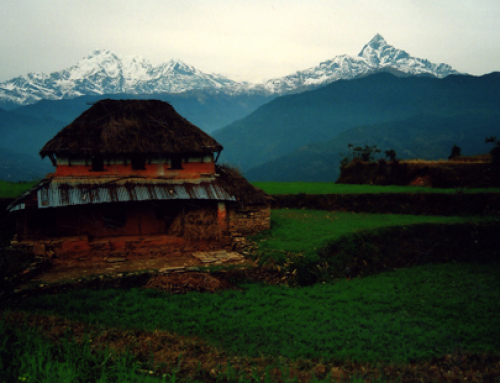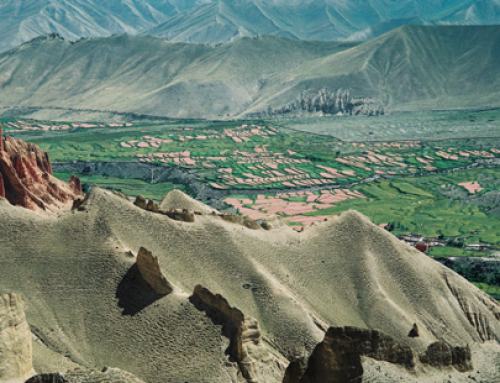Project Description
HIGHLIGHTS
-
Visit Lo Manthang, the only Walled City of Nepal
-
Experience rich Tibetan culture and warm hospitality
-
Visit highly revered ancient monasteries and ancient caves
-
Breathtaking mountain sceneries
-
Visit World Heritage Sites in Kathmandu
The region of Mustang is a remote, semi-independent, former Tibetan kingdom within the territory of Nepal. It lies just north of the Annapurna Region, on the Tibetan border. Mustang is one of the last bastions of undisturbed Tibetan culture in the world. Buddhist monasteries and nunneries are built into forbidding cliffs and mountain ledges, and the starkly beautiful, windy, arid Tibetan plateau is unbroken for many hours of trekking, or riding by horseback. The trek enters upper Mustang at Kagbeni, a quaint medieval town nestled in apple orchards and encircled by snow covered mountains. It eventually reaches the ancient capitol of Lo Manthang, a walled city built of whitewashed mud bricks and teeming with Buddhist prayer wheels and stupas, seeming to arise from the earth itself.
Buddhist monasteries and nunneries are built into forbidding cliffs and mountain ledges, and the starkly beautiful, windy, arid Tibetan plateau is unbroken for many hours of trekking, or riding by horseback. The trek enters upper Mustang at Kagbeni, a quaint medieval town nestled in apple orchards and encircled by snow covered mountains. It eventually reaches the ancient capitol of Lo Manthang, a walled city built of whitewashed mud bricks and teeming with Buddhist prayer wheels and stupas, seeming to arise from the earth itself.
There are very few guesthouses and restaurants in the region; camping is required and most necessities must be carried in. Entirely closed to visitors until the 1990s, upper Mustang trek is still a restricted and controlled trekking area, with its own set of rules for cultural conservation and require a minimum $500 permit fee for a ten-day trek. Treks are typically ten days, but can be longer. The high winds, altitude and cold add to the challenge of this trek even in the warmer months. This trek is not recommended in the winter months and can be strenuous for some people.
Entirely closed to visitors until the 1990s, upper Mustang trek is still a restricted and controlled trekking area, with its own set of rules for cultural conservation and require a minimum $500 permit fee for a ten-day trek. Treks are typically ten days, but can be longer. The high winds, altitude and cold add to the challenge of this trek even in the warmer months. This trek is not recommended in the winter months and can be strenuous for some people.
TREK FEATURES
Total duration: Kathmandu-to-Kathmandu: 18 days
On the trek: 12 days
Max. Elevation: 4,150m
Trek difficulty: Moderate to strenuous
Trek style: Fully Camping/Teahouse Trek
Group size: Max. 12 plus a local trek leader
Min. 2 plus a local trek leader
Best months: April to October
Accommodation: Twin sharing hotels in Kathmandu and Pokhara and tented camps during the trek (Based on B & B in hotels and full board during the trek)
Trip starts/Ends: In Kathmandu, Nepal
Trek leader: TBA
| ARRIVAL DATES | DEPARTURE DATES | PRICE | STATUS |
|---|---|---|---|
| Sunday 5 April, 2020 | Wednesday 22 April, 2020 | USD 4410 / 2525 for THT | AVAILABLE |
| Sunday 12 April, 2020 | Wednesday 29 April, 2020 | USD 4410 / 2525 for THT | AVAILABLE |
| Sunday 3 May, 2020 | Wednesday 20 May, 2020 | USD 4410 / 2525 for THT | AVAILABLE |
| Sunday 4 October, 2020 | Wednesday 21 October, 2020 | USD 4410 / 2525 for THT | AVAILABLE |
| Sunday 11 October, 2020 | Wednesday 28 October, 2020 | USD 4410 / 2525 for THT | AVAILABLE |
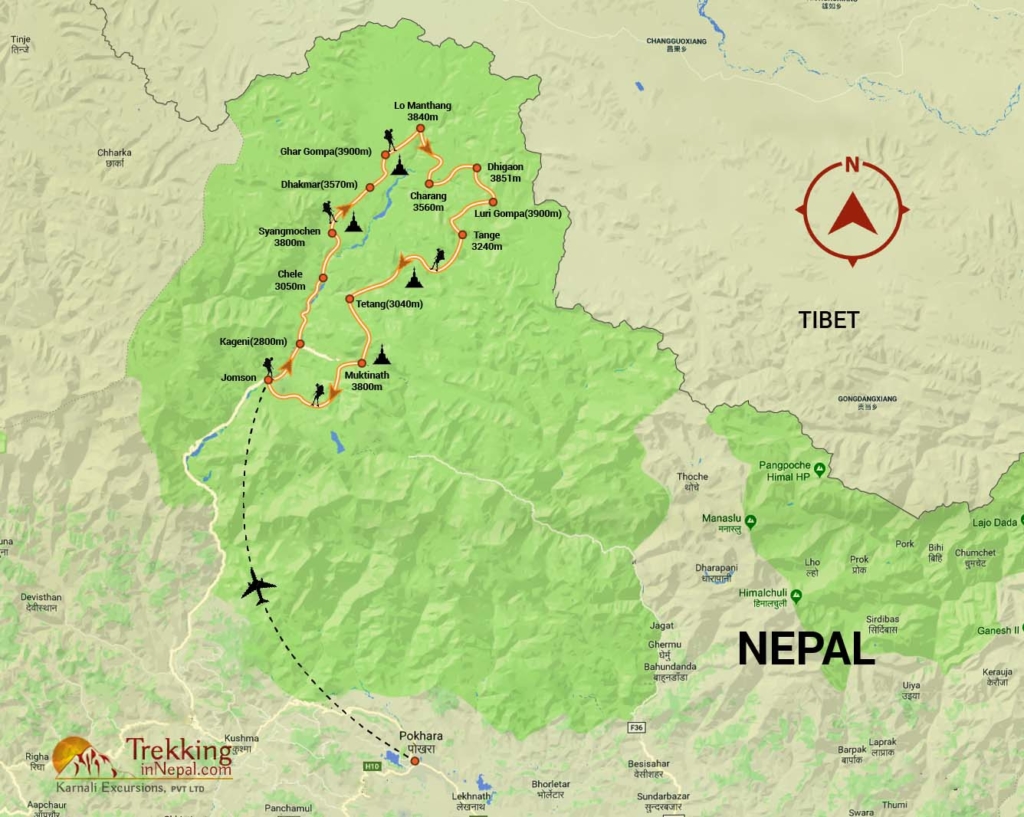
Inspire your friends and family members by sharing these amazing treks in the Himalaya.
